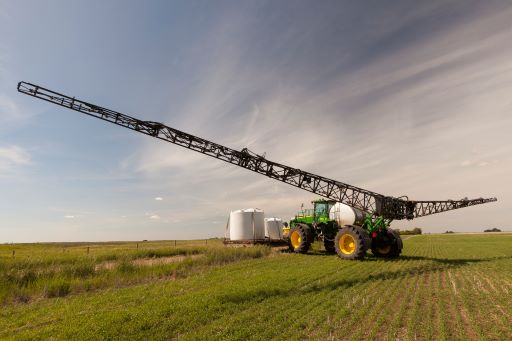Released on June 25, 2020
Windy conditions continued in most of the province this week, but started to calm down in other areas. This allowed more farmers to get into the field to spray for in-crop weed control and insect pests. Wind continued to dry the topsoil moisture but rain in many areas has helped to alleviate some of these issues.
Dry conditions and cool temperatures have slowed hay and pasture growth, specifically in the southern and east-central regions. Most of the province received at least a small amount of rainfall this week. The Gouldtown area in the southwest region received the highest amount of rainfall with 73.5 mm. Most farmers would welcome more rain, but some that received high amounts of rainfall over the past few weeks have indicated that some fields are saturated and that wet fields have delayed spraying.
Provincially, moisture levels on crop land remain at the same level. Hay and pasture land moisture levels have reduced slightly, particularly in areas that received less rainfall this week. Cropland topsoil moisture is rated as two per cent surplus, 69 per cent adequate, 22 per cent short and seven per cent very short. Hay and pasture land topsoil moisture is rated as two per cent surplus, 55 per cent adequate, 26 per cent short and 17 per cent very short.

Areas that received more rainfall in the past few weeks have reported that crop and pasture development has improved. Warm temperatures have also helped with crop development. Farmers in the east-central and southern regions report that lack of rainfall in some areas has reduced hay and pasture growth and will delay the timing or reduce the amount of hay for the first cut.
Crop development is around the normal development stage for this time of year for most crops. More of the oilseed crops are considered behind normal.
Provincially, 68 per cent of fall cereals, 69 per cent of spring cereals, 60 per cent of oilseed crops and 74 per cent of pulse crops are at their normal stages of development for this time of year. Dry topsoil moisture conditions have resulted in delayed emergence and development of later and smaller seeded crops.
Flea beetle damage was reported in most regions of the province which has affected canola development for some. Farmers have been busy spraying, branding and vaccinating cattle, and rolling and hauling grain. There have been isolated reports of reseeding due to damage from wind, dry conditions, insect pests and hail.
A complete, printable version of the Crop Report is available online at https://www.saskatchewan.ca/crop-report.
Follow the 2020 Crop Report on Twitter at @SKAgriculture.
Next week’s crop report will be released on Friday, July 3, 2020.
-30-
For more information, contact:
Sara Tetland
Agriculture
Moose Jaw
Phone: 306-631-0483
Email: sara.tetland@gov.sk.ca

